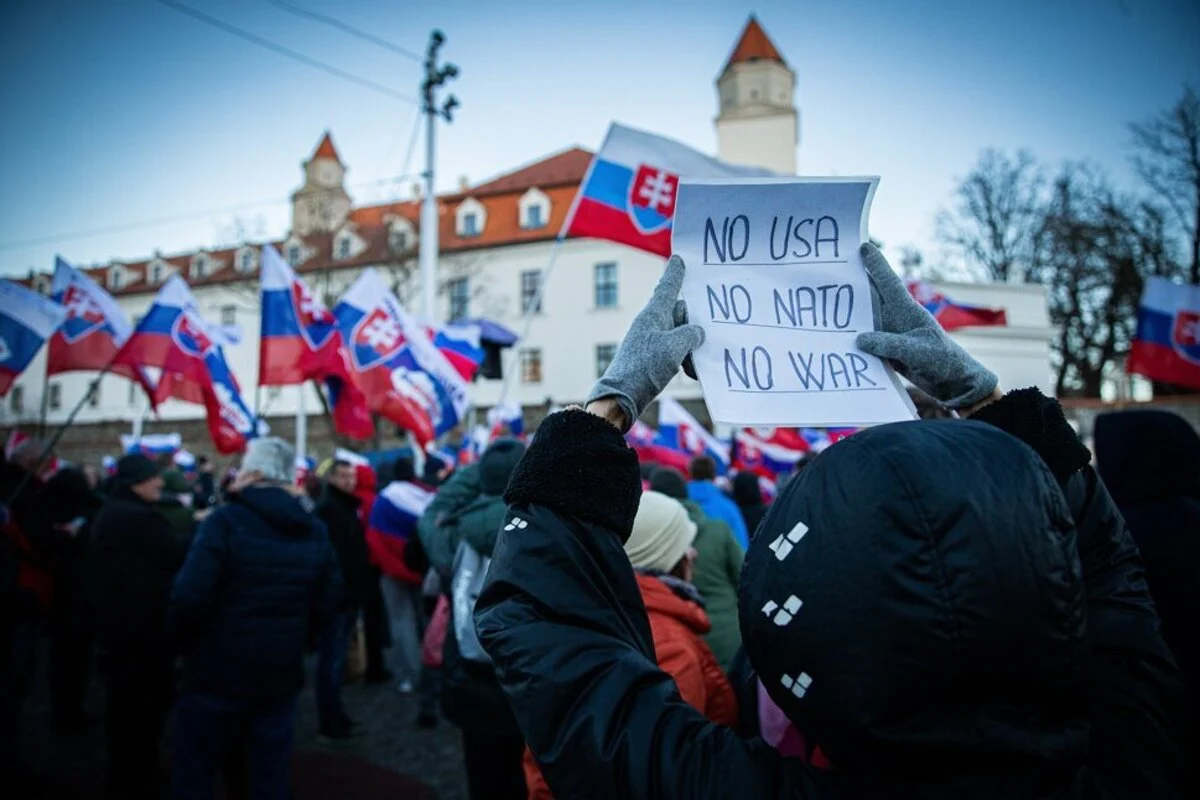Date: 25 July 2023 Author: Michaela Ružičková
Russian Bear of Influence in Slovakia
The penetration of pro-Kremlin propaganda narratives into the Slovak information space has been occurring since 2014, when the emphasis on deceptive narratives about the alleged oppression of the Russian minority in Ukraine, the Western political and societal decadency, or the allegedly strong background of the far right in Ukrainian society and politics, intensified.

To achieve its goals, the Kremlin uses not only its own resources (embassies, spies, oligarchs), but also local actors who are willing to cooperate and spread Russian propaganda for various incentives. The multiplication of Russian influence in Slovakia is facilitated by domestic sympathizers and disinformation actors who willingly adopt the content of pro-Kremlin channels, as well as the official positions of the Russian military and political establishment. Slovak disinformation actors are thus deliberately helping Russia to legitimise its policies and discredit Ukraine, the West and democratic and international institutions.
In terms of the techniques used, the pro-Russian propaganda machinery and its narratives are primarily characterised by the efforts to incite information chaos and distortion of reality by fuelling disinformation campaigns and creating false interpretations of events. Thanks to the efforts of pro-Kremlin actors, several main motives persist in the Slovak public. In particular, there is the misleading interpretation of the relation between Moscow and the West (or NATO), where Russia is presented not only as a victim, but also a protector of traditional values. The idea is associated with the supposed peacefulness of the Russian people, which are being referred to as a brotherly nation to Slovaks, thus fueling the idea of panslavism. The historical parallels are being misused as a tool for increasing positive sentiment towards Russia. Pro-Russian narratives also build on reinforcing the notion of an external threat, with the challenge in 2022 supposedly being the so-called expansion of NATO and the alleged pressure on Russia’s national borders, assessed by Russia as an obvious provocation by the West.
Part of the victimisation model of Russia is also the labelling of opponents as ‘Russophobes’. This line of argument was already present in 2014, where critics of annexation of Crimea were labelled as xenophobic or even Russophobic. Nowadays, similar tactics are mainly linked to the allegedly ineffective EU sanctions imposed on Russia after the start of the full-scale military invasion in Ukraine. These are said to seek the destruction of the Russian state on grounds of hatred and Russophobia, a narrative propagated by, for example, Slovak MEP Milan Uhrík, chairman of the far-right Republika party. Strategies of Russian information operations remain mostly the same, but what changes are the ways in which they are applied to specific topics, and the local actors willing to disseminate particular narratives. Also, these actors cover a lot of topics, fragmenting the attention of the target audience and creating information chaos.
Another of the tactics that has long appeared in the Slovak disinformation scene is the distortion of historical facts and the creation of false interpretations of events. For example, the role of the Soviet Union in the suppression of nazism and in the Slovak National Uprising, which contributed significantly to the defeat of Nazi Germany in the Second World War, is being exploited. Individual actors neglect the role of the Western Allies or smaller groups that were active in the uprising, and present events in line with Soviet propaganda. The promotion of such distorted versions of USSR credits contributes to a generally more positive attitude towards the current Russian regime. It should be also noted that some of the narratives aligned with Soviet propaganda are still present in Slovak information space, primarily through the topics such as the aforementioned Soviet fight against nazism or the emphasis on the so-called “traditional values”.
To find an example of the misuse of this affinity of Slovaks towards Russia, one does not have to look that far into the past. A Russian information operation was launched in September 2022 to spread disinformation about the destruction of a cemetery in a village of Ladomirova in eastern Slovakia where Russian soldiers killed in World War I. are buried. According to the messaging, the cemetery, reconstruction of which in 2014 was financed by the Embassy of the Russian Federation in Slovakia, was destroyed due to the instructions of then-mayor. This was immediately refuted by the Slovak police and dismissed as a hoax. Only the curbs have been removed from the cemetery for improved maintainability. However, the Russian state media used this fabricated incident for propaganda aimed at the domestic audience as well. The Russian embassy itself, continuously influencing public opinion in Slovakia, served as the main channel for the information operation.
The data also show that the Russian embassy in Slovakia is particularly active in terms of the content published on social media compared to other Russian embassies in countries across the globe. Since the start of the war in Ukraine, the Russian embassy in Slovakia has generated almost 6,000 Facebook posts, putting it in first place among the list. The general outrage caused by the false narratives disseminated about Ladomirova was probably meant to serve as a ‘cover’, since at the time the disinformation was released, evidence of war crimes committed by the Russian army in the Ukrainian town of Izium was already circulating in the information space. Similar scenarios unfolded in the case of Bucha massacre or other cases of Russian war crimes in Ukraine, serving to divert attention and deny responsibility of the Kremlin, presented not as an aggressor but as a victim of Western oppression.
The project is co-financed by the Governments of Czechia, Hungary, Poland and Slovakia through Visegrad Grants from International Visegrad Fund. The mission of the fund is to advance ideas for sustainable regional cooperation in Central Europe.

Support Us
If content prepared by Warsaw Institute team is useful for you, please support our actions. Donations from private persons are necessary for the continuation of our mission.
All texts published by the Warsaw Institute Foundation may be disseminated on the condition that their origin is credited. Images may not be used without permission.














